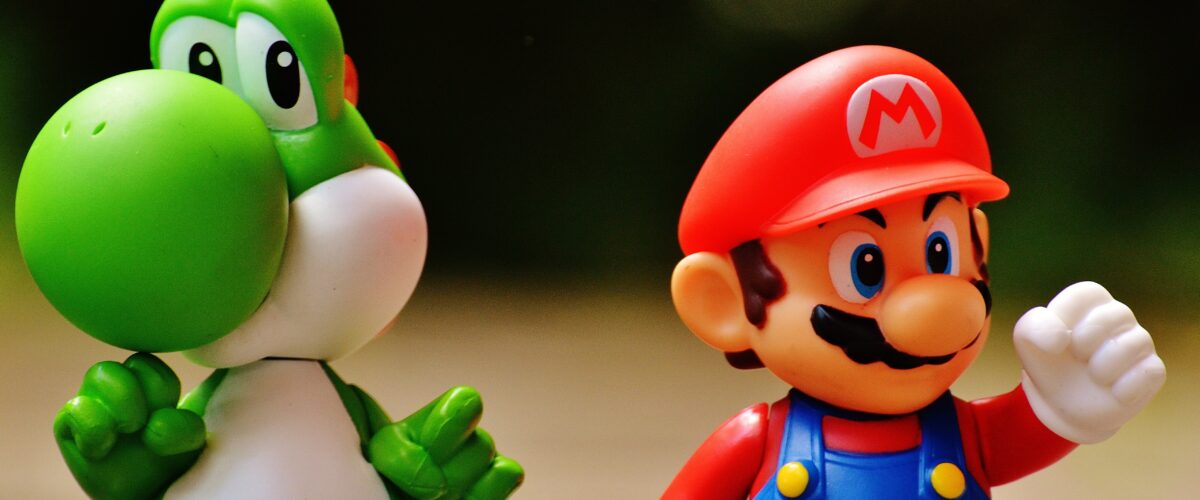Super Mario Bros. is one of the most popular and influential video games of all time. It was released in 1985 for the Nintendo Entertainment System (NES) and quickly became a critical and commercial success. The game helped to revive the video game industry and is credited with popularizing the side-scrolling platform genre.
Super Mario Bros
Super Mario Bros. was a critical and commercial success. It was praised for its simple yet addictive gameplay, its colorful graphics, and its catchy music. The game helped to revive the video game industry, which had been struggling in the early 1980s. Super Mario Bros. is also credited with popularizing the side-scrolling platform genre, which became one of the most popular genres in video games in the 1980s and 1990s.
The game has been ported to many different platforms over the years, and it has been re-released numerous times. In 2009, Super Mario Bros. was inducted into the World Video Game Hall of Fame. The game is still popular today, and it is considered to be one of the best video games of all time.
Here are some additional facts about Super Mario Bros.
- The game was released in Japan on September 13, 1985.
- It was released in North America on October 18, 1985.
- It was released in Europe on February 14, 1986.
- The game has sold over 40 million copies worldwide.
- It is the best-selling video game of all time.
- The game was followed by a sequel, Super Mario Bros. 2, in 1988.
- The game has been adapted into a variety of media, including a cartoon series, a live-action film, and a variety of merchandise.
Birth of Mario
Super Mario Bros. was created by legendary game designer Shigeru Miyamoto and developed by Nintendo. The franchise’s roots can be traced back to the arcade game “Donkey Kong” in 1981, where a character named Jumpman (later renamed Mario) made his debut. Mario’s popularity soared, leading to the development of his own standalone game.
Super Mario Bros. (1985)
In 1985, Nintendo released “Super Mario Bros.” for the Nintendo Entertainment System (NES). This side-scrolling platformer revolutionized the gaming industry, introducing groundbreaking gameplay mechanics, vibrant visuals, and memorable music. Players took control of Mario, navigating through Mushroom Kingdom to rescue Princess Peach from the villainous Bowser. Super Mario Bros. became a massive success, helping to revive the struggling video game market and cementing Mario’s status as an iconic character.
Expanding the Franchise
Following the success of the original game, Nintendo expanded the Super Mario Bros. franchise in various ways:
- Super Mario Bros. 2 (1988): The sequel introduced new gameplay elements, allowing players to choose between Mario, Luigi, Toad, and Princess Peach as playable characters, each with unique abilities.
- Super Mario Bros. 3 (1988): Widely regarded as one of the greatest video games of all time, Super Mario Bros. 3 introduced a world map, power-ups like the Tanooki Suit, and a variety of new levels and challenges.
- Super Mario World (1990): Released for the Super Nintendo Entertainment System (SNES), this game introduced Yoshi, Mario’s loyal dinosaur companion, and expanded the scope of the series with colorful graphics and hidden secrets.
3D Mario
The Super Mario Bros. franchise made a groundbreaking transition to three-dimensional gameplay, forever changing the landscape of platforming games:
- Super Mario 64 (1996): Released for the Nintendo 64, Super Mario 64 was the first 3D platformer in the series. It introduced an open-world structure, allowing players to explore Princess Peach’s castle and dive into paintings to access different levels.
- Super Mario Sunshine (2002): This installment for the Nintendo GameCube introduced a water-powered backpack called FLUDD, which Mario used to clean up the tropical Isle Delfino.
- Super Mario Galaxy (2007): Released for the Wii, Super Mario Galaxy took Mario on a cosmic adventure, navigating through spherical worlds and defying gravity.
- Super Mario Odyssey (2017): The most recent mainline entry in the franchise, Super Mario Odyssey for the Nintendo Switch, showcased Mario’s globe-trotting journey to rescue Princess Peach from Bowser. The game featured a unique possession mechanic using Mario’s hat, Cappy, allowing him to control various objects and enemies.
Spin-offs and Legacy
The success of Super Mario Bros. led to numerous spin-offs and adaptations across different genres and platforms:
- Mario Kart (1992-present): The beloved kart racing series featuring Mario and friends.
- Mario Party (1998-present): A multiplayer party game with a variety of mini-games.
- Super Mario Maker (2015-2019): A level creation tool that allows players to design and share their own Mario levels.
The impact of Super Mario Bros. on the gaming industry cannot be overstated. It not only defined the platforming genre but also set the standard for tight controls, imaginative level design, and memorable characters. Mario’s enduring legacy continues to captivate generations of gamers and remains a symbol of Nintendo’s innovation and creative spirit.

